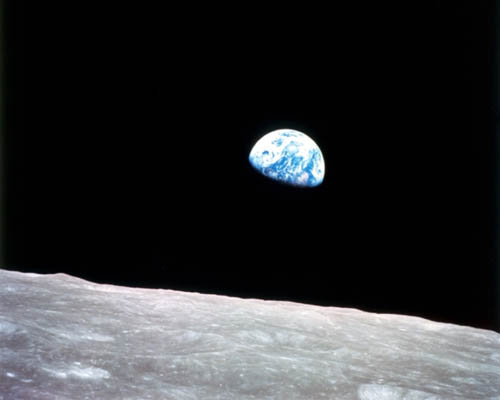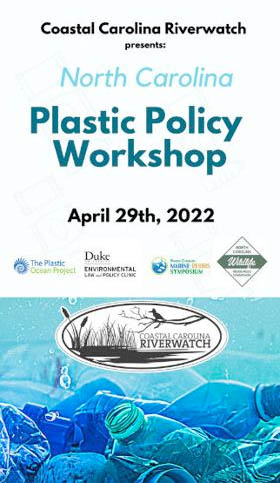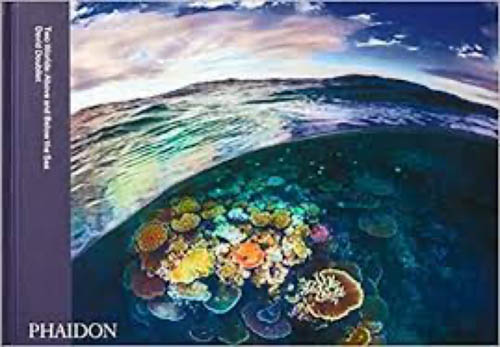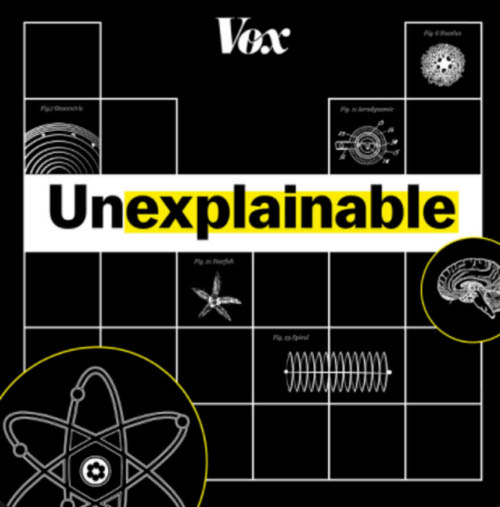 | | |  This past week, we celebrated Earth Day. I made the customary trip outside to my local park, made my customary donations, and went about my Earth Day as a good environmentalist. But I went through the day feeling the weight of my identity as an environmentalist while wondering: why do I care about the environment everyday while accepting that the world seems to only care one day out of the year? Then I came across a poem that addresses this uncomfortable cultural hypocrisy by the young writer, Willow Defebaugh: This past week, we celebrated Earth Day. I made the customary trip outside to my local park, made my customary donations, and went about my Earth Day as a good environmentalist. But I went through the day feeling the weight of my identity as an environmentalist while wondering: why do I care about the environment everyday while accepting that the world seems to only care one day out of the year? Then I came across a poem that addresses this uncomfortable cultural hypocrisy by the young writer, Willow Defebaugh: I’ve always felt strange about the word environmentalist. Does loving tree really warrant a special identity? That is it not simply another word for human is a reflection of how we see the Earth:
as something separate. You cannot abuse someone eleven months out of the year and claim to love them for one. Not when they love you every day under the sun. When you love someone, they are a part of you. They are the breath you breathe
and why you breathe it. They are the oxygen in your lungs, the salt in your blood, the salt in your seas. You see, when someone you love cries for help, you do not pretend you cannot hear. You don’t tell them it’s not the right time of year. The Earth is not a day or a month. It is an hourglass, a thousand grains of sand slipping past. It’s now or never. From now on, I am embracing my new identity as a human. Someone who cares every day about the state of the home that cares for use every minute of every day. I am encouraged to see more people embracing this role and acting on their impulse to care and protect our Earthly home and our oceans. In the U.S. alone, clean energy is surging on the coastlines, scientists are fighting climate change with sea algae, and activists efforts are saving manatees and corals alike. This Earth Day, we must unite as humans to see the environmental challenges ahead but confront them with hope, expertise, and determination. | | | | | | | | Combating Climate Change Crustacean-Style | | | | | | How the Ocean's Most Mysterious Deep-sea Creatures Are Helping Combat Climate Change Transparent jellies, fish that attract prey with "fishing poles" on their head, and pancake-shaped octopuses all call the deep sea home. In the Monterey Bay, an underwater robot is searching for these elusive creatures. The creatures found are displayed at the famed Monterey Bay Aquarium's new exhibition, "Into the Deep." The exhibit took five years to complete. The design is filled with pipes, pumps, and filters to help replicate a deep-sea environment. | | | | | | Why Algae Can Be Our Next Secret Weapon to Combat Plastic Pollution Plastic pollution has become an alarming problem worldwide. A 2015 study published in Science Magazine projected that by 2025, around 100–250 million metric tons of plastic waste could enter our oceans every year. The problem also triggered the United Nations (UN) to issue a global resolution to end plastic waste, adopted by representatives from 173 countries. However, even if all drastic measures were put in place to stop plastic production tomorrow, we would still have around 5 billion tons of plastic waste in landfills and the environment. | | | | | | A Maine-based Company is Helping Fishermen Become Kelp Farmers to Adapt to Climate Change By 2050, one study from the Gulf of Maine Research Institute suggests, warming waters could make lobster populations drop by as much as 62%. For decades, Maine fisherman Steve Train has made a living catching lobsters and other seafood. But as warming water off the Maine coast makes the future of the fishery more uncertain, he’s also now started farming kelp as part of a growing network of fishermen and women now working with a company called Atlantic Sea Farms. | | | | | | Success With Sea Creatures? | | | | Scientists Breed Threatened Florida Coral Species in Step Toward Reef Restoration Scientists have successfully bred a threatened species of coral as part of a project that hopes to restore damaged reefs off the coast of Florida that are under threat by a relatively new disease, a coral rescue organization said on Thursday. Reefs in Florida and the Caribbean are facing growing threat of destruction by the Stony Coral Tissue Loss Disease that strips coral of its color and ultimately its life altogether. | | | | | | Whales’ Rebound in Australia a Success Story: Duke Biologist Australia’s decision to remove humpback whales from its endangered species list is a testament to the recovery of this majestic marine mammoth, a victory that should be celebrated and open the way for conservationists to shift attention on other, lesser known and heavily depleted ocean mammal populations, according to marine scientists. Earlier this year, the Australian Ministry of Environment delisted humpback whales, citing evidence that the population there has recovered to preindustrial whaling numbers. | | | | | | Trying Everything, Even Lettuce, to Save Florida’s Beloved Manatees Pollution has killed the sea grass that manatees feed on, and they are starving to death in large numbers. Extraordinary intervention may not be enough to protect them. At first, the manatees stayed away from the romaine lettuce. It was an extraordinary experiment in dire times: humans dumping pallets of leafy greens to feed Florida’s beloved manatees in the warm waters of the Indian River Lagoon, where decades of pollution have destroyed their delicate sea grass diet. | | | | | | Where the Ice Is Still Abundant, These Penguins Are, Too Adélie penguins have had a rough time of it on the western side of the Antarctic Peninsula, where warming linked to climate change has occurred faster than almost anywhere else on the planet. That and other factors have led to sharp declines in Adélie populations in recent decades. But on the eastern side, it’s a different story. “It’s just a complete train wreck on the western side of the peninsula,” said Heather J. Lynch, a statistical ecologist at Stony Brook University who studies penguin populations and how they are changing. | | | | | | The Solution to Pollution? Stop at the Source | | | | Plastic crisis in Arctic: Pollution just as bad as anywhere else on Earth, scientists warn Plastic pollution in the Arctic is as bad as anywhere else on Earth, warns a new study. Debris from fabrics, personal care products, packaging and other everyday materials is flooding the pristine wilderness. Carried north by waves, winds and rivers, there are high concentrations of these plastic items and microplastic fibers on the seafloor, remote beaches, and even in ice and snow. It has serious implications. The Arctic is the planet’s “air conditioner,” regulating temperatures and circulating ocean currents. | | | | | | Deepwater Horizon Oil Spill Anniversary Is a Grave Reminder of Why Not to Trust the Oil Industry The only thing we can truly trust this industry to do is fight to preserve its business model and secure profits for its shareholders. In the face of an acute energy crisis in Europe, global energy insecurity, war in Ukraine, and escalating geopolitical turmoil, the U.S. oil industry wants to offer us its help and advice. Give us more, they say, and we can ease the pain and bring stability: more subsidies and more access to your public lands. | | | | | | In the Ocean, It's Snowing Microplastics Tiny bits of plastic have infiltrated the deep sea’s main food source and could alter the ocean’s role in one of Earth’s ancient cooling processes, scientists say. As long as there has been marine life, there has been marine snow — a ceaseless drizzle of death and waste sinking from the surface into the depths of the sea. The snow begins as motes, which aggregate into dense, flocculent flakes that gradually sink and drift past the mouths (and mouth-like apparatuses) of scavengers farther down. | | | | | | Looking on the Bright Side | | | | How Conserving 30 Percent of U.S. Land by 2030 Could Work Achieving the 30x30 goal, as it is known, requires much more than declaring more national parks The U.S. covers a vast array of ecosystems, from Alaska’s Arctic tundra to Florida’s tropical swamps, with prairies, snow-capped peaks and deserts in between. Like the rest of the planet, humans are putting those ecosystems under enormous strain as we convert land to agriculture and urban development, release myriad pollutants and burn fossil fuels that spew heat-trapping greenhouse gases. | | | | | | Seeds of Hope: How Nature Inspires Scientists to Confront Climate Change If hope had a color, it would be the pale green of a newly sprouted seed. It would smell of pollen and damp earth. Its shape would be the swanlike arc of a stem stretching toward the sun. Every morning of this difficult spring, I have tumbled out of bed and immediately gone to check on the vegetable seedlings growing on my windowsill. Before checking my email or reading the news, I stop to gently moisten their potting soil and coo over each pair of soft new leaves. | | | | | | Wind Blows the Competition Out of the Water The winds were blowing in renewable energy’s favor last month, as U.S. wind turbines produced more energy over a 24-hour period than either coal and nuclear for the first time in the country’s history. The new record, which occurred on March 29, marks a historical first for wind power. Although wind has occasionally beat either nuclear or coal for a day, it has never produced more electricity than both at the same time. The 2,017 gigawatt-hours of wind power generated on that Tuesday late last month was enough to make wind the U.S.’s second-largest producer of electricity. | | | | | | | | | | | April 29, 2022 from 1:00-5:00 PM PAID EVENT  Join policy experts from the Plastic Oceans Project, Duke University Nicholas School of the Environment, North Carolina Debris Symposium, and the North Carolina Wildlife Commission to discuss the state of plastic prevention policy in North Carolina. Learn more about innovations in policy to work towards a plastic-free world while discussing challenges and triumphs with policymakers and leading academics. Join policy experts from the Plastic Oceans Project, Duke University Nicholas School of the Environment, North Carolina Debris Symposium, and the North Carolina Wildlife Commission to discuss the state of plastic prevention policy in North Carolina. Learn more about innovations in policy to work towards a plastic-free world while discussing challenges and triumphs with policymakers and leading academics.
“Plastic pollution has received a significant amount of media attention the last few years,” the assessment reads, “but there’s still a dire need to establish regulatory policies and implement effective infrastructure in order to mitigate the harmful impacts of plastics on aquatic ecosystems.”
Some of the biggest effects plastic pollution has on the marine environment include marine animals becoming entangled in or ingesting plastic. It can also release toxins into the water as it breaks down. | | | | | | | | |  Review by Colossal: “From the coral-cloaked Kimbe Bay of Papua New Guinea to the icebergs of Antarctica’s Danco Island, the bisected photographs in David Doubilet’s forthcoming book Two Worlds: Above and Below the Sea unveil the diverse ecosystems on either side of the water’s surface. The 128-page volume published by Phaidon features 70 images from Doubilet’s 50-year career spent traveling the globe and pioneering the field of underwater photography. Review by Colossal: “From the coral-cloaked Kimbe Bay of Papua New Guinea to the icebergs of Antarctica’s Danco Island, the bisected photographs in David Doubilet’s forthcoming book Two Worlds: Above and Below the Sea unveil the diverse ecosystems on either side of the water’s surface. The 128-page volume published by Phaidon features 70 images from Doubilet’s 50-year career spent traveling the globe and pioneering the field of underwater photography.
The curated selection is wide-ranging in date and location, documenting a fuzzy seal pup lounging on a 2011 glacier in Canada, a school of bar jacks swimming in the Grand Caymans back in the 90s, and blacktip reef sharks under a French Polynesian sunset in 2018. ‘I want to create a window into the sea that invites people to see how their world connects to another life-sustaining world hidden from their view,’ Doubilet says.” See more photos from Two Worlds HERE or find the book HERE | | | | | | |  Looking for a podcast that gets straight to the facts? Vox has the informative episodes for you. Each 30-minute segment is packed with intriguing twists and turns as experts unveil the realities behind some of the environment’s most misunderstood problems. Explore Vox’s ocean specials below: Looking for a podcast that gets straight to the facts? Vox has the informative episodes for you. Each 30-minute segment is packed with intriguing twists and turns as experts unveil the realities behind some of the environment’s most misunderstood problems. Explore Vox’s ocean specials below:
Glow in the dark ocean
“Most deep-water creatures are bioluminescent. Marine biologist Edie Widder has spent the last 40 years trying to figure out why.” Why is 99% of ocean plastic missing?
“How can we solve the problem of ocean plastic if we don’t know where most of the plastic is?” Why whales get beached
“Every year, thousands of marine mammals end up trapped on beaches, but it’s often hard to figure out why. | | | | | |  Audrey Magnuson, RCC Presidential Fellow Audrey Magnuson, RCC Presidential Fellow
Audrey Magnuson co-leads RCC’s Coasts and Ocean program and works on environmental justice and policy. She is a senior at Duke University majoring in Public Policy with minors in Environmental Science and Art History. audrey.magnuson@duke.edu | | | | | |  The Rachel Carson Council Depends on Tax-deductible Gifts From Concerned Individuals Like You. Please Help If You can. The Rachel Carson Council Depends on Tax-deductible Gifts From Concerned Individuals Like You. Please Help If You can. | | | | | | | |  Sign Up Here to Receive the RCC E-News and Other RCC Newsletters, Information and Alerts. Sign Up Here to Receive the RCC E-News and Other RCC Newsletters, Information and Alerts. | | | | | | | | | | | |